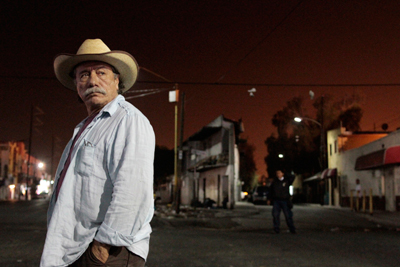By Colin Brown
Want to know why the film business is such a tough nut to crack? Then listen to Erik Feig, president of production at Lionsgate, explaining to a WGA West audience last year how even the largest independent film studio in North America has to tap dance between two polar sets of interests:
“Every single movie that we make has to be sold twice. First, on a pre-sale basis, to a bunch of independent foreign distributors who are worried about losing money. And second, to a consumer who wants to see something that they haven’t seen before. Trying to find the right project and the right package that can satisfy both of those moments in time, separated by eighteen months of hopefully good execution, is really, really hard.”
It is an in-built tension familiar to anyone who has tried to pitch a film project. Each year, the box office tells us that audiences crave what’s new. Every film festival, movie market or project forum is another reminder that the industry gatekeepers are at their most comfortable with the tried and tested. Consider this year’s Toronto International Film Festival: for all the exciting artistry on display this past week, the big-money distribution deals still lasered in on crowd-pleasing, films featuring celebrity actors. And when the American Film Market swings around again in November, it will still be broad-based action films that that galvanizes the global market – even as the media itself rhapsodizes about the ground-breaking awards contenders that are bound to thrill ticket-buyers with their inventive storytelling and fresh faces.
How one sets about resolving cinema’s conflicting impulses and inherent contradictions is at the heart of “film packaging.” The most skilled packagers are those who can turn dreams into solid investment propositions by dressing them up in just the right combination of bold new fashions and sensible clothes. While landing that irresistible A-list cast and top-notch director will go along way to propelling a particular project down the industry runway, star-names are only one part of a complex calculus involving many other moving parts. Which is just as well, since the likes of Brad Pitt can only sashay to so many projects at once.
Starting with this initial overview on packaging practices, filmonomics will attempt over the coming weeks to dissect and decipher the way that film industry professionals evaluate projects at varying budget levels and genre tropes. This is intended not so much as a check-list of essential ingredients – if reliable film financing recipes exist at all, they are subject to constant revisions and multiple interpretations – but as a guiding set of principles for generating industrial heat.
So much of packaging is attitudinal, anyway. In drawing up his own essential list of twenty tips for packaging your project successfully, producer Ted Hope talks at great length about how filmmakers should go about attracting talents and building consensus around their projects, not who or what they need in order to juice up their market appeal. From his years of experience , packaging seems to come down to a delicate balancing act between patient professionalism and urgent calls to action. The trick, he says, is in making your project feel inevitable in industry eyes.
A real-time appreciation of what the industry is looking for in terms of material, which names they consider are worth banking on, and how much they are willing to pay for those combinations, is certainly crucial. But you won’t be able to determine such sweet-spots by simply looking at past box office performance – or VOD numbers if you can find them. As this collection of stunning infographics illustrates, you can use data to capture any number of statistical correlations in endlessly vivid ways. This rear-view mirror on marketplace can help set a baseline for commercial expectations, but it won’t necessarily improve your profitability picture on the long road ahead. For one thing as Disney’s vice-president of casting Randi Hiller reminded that same WGAW packaging seminar, “the temperature on things changes very quickly.” For another, yesterday’s star attraction may have now soared beyond the financial reach of most independent producers. Here’s Hiller again, drawing on her previous background as an independent casting agent:
“It’s always been, when you are casting a small movie, about getting someone to agree with your bet. Everyone is always chasing the established person. But what are your chances of getting them? Romantic comedies are incredibly hard to attach people to because everyone wants Reese Witherspoon and she’s getting $20 million a studio film. Why is she going to work on a $1 million romantic comedy? It’s just not going to happen. The only way to get a romantic comedy of the ground is with some actor who doesn’t ever get a chance to do that and is coming up the ranks.”
Identifying those next generation actors is its own exercise in educated guesswork and inside information. At the time of that panel last summer, everyone agreed that British actor Tom Hardy was the flavor of the month based on a bravura performance in the little-seen festival film Bronson, and supporting roles in films such as Tinker Tailor Soldier Spy and Inception. His stunning breakthrough as Bane in The Dark Knight Rises had yet to be seen publicly, although it was no doubt reverberating on the industry grapevine. All this was more than enough to anoint Hardy as cinema’s hottest prospect, even though his accumulated credits would not supported that status. As Hiller observed:
“The interesting thing is that Tom Hardy hasn’t justified a budget of a movie but there is not a studio or an independent alive that wouldn’t want take him if they could have him – and that’s the weird thing, there is not a financial equation. Everybody believes he’s a star and they will take that risk.”
Of course, you might say in hindsight, being cast as the arch-villain in an upcoming Batman directed by Christopher Nolan was bound to boost any decent actor’s star quotient. Common sense suggests that – which is why WME packaging agent Graham Taylor is at pains to tell creatives to apply level-headed logic based on basic market research and future assumptions. Opening a five-star restaurant in a town of one hundred people is probably ill-advised. So too is expecting anyone other than the handful of film art-collectors to back an expensive auteur-driven would-be masterpiece. His advice to WGA screenwriters is to wear their producers’ hats:
“Like anything, we have to put an army together. If you have relationships and can get to people directly then great, do it. If you can’t, then find a smart producer to partner up with or a filmmaker. You want to keep building your army to unlock a piece of financing, be it for development or production. Look, we live in a business of anomalies. People have that perception that it would be great to find the Dumb Denis in Deluth to write the magical check and at times people like that are unlocked, but if you are sane and you have an interesting movie and you can put an adult structure to it and talk to a financier actually to get them excited and touched by the material, and actually figure out what they actually need from it from the point of view of what is the budget, what is the actual risk on the movie.”
It all boils down to finding the model and then trying to sell into it. Or as Feig so succinctly put it: “know your beast: the genre, the budget, the kind of casting and then put your studio hat on. Ask yourself what would make me say ‘yes’ to this.”
It’s a multi-layered question that we will now attempt to unpackage ourselves.




